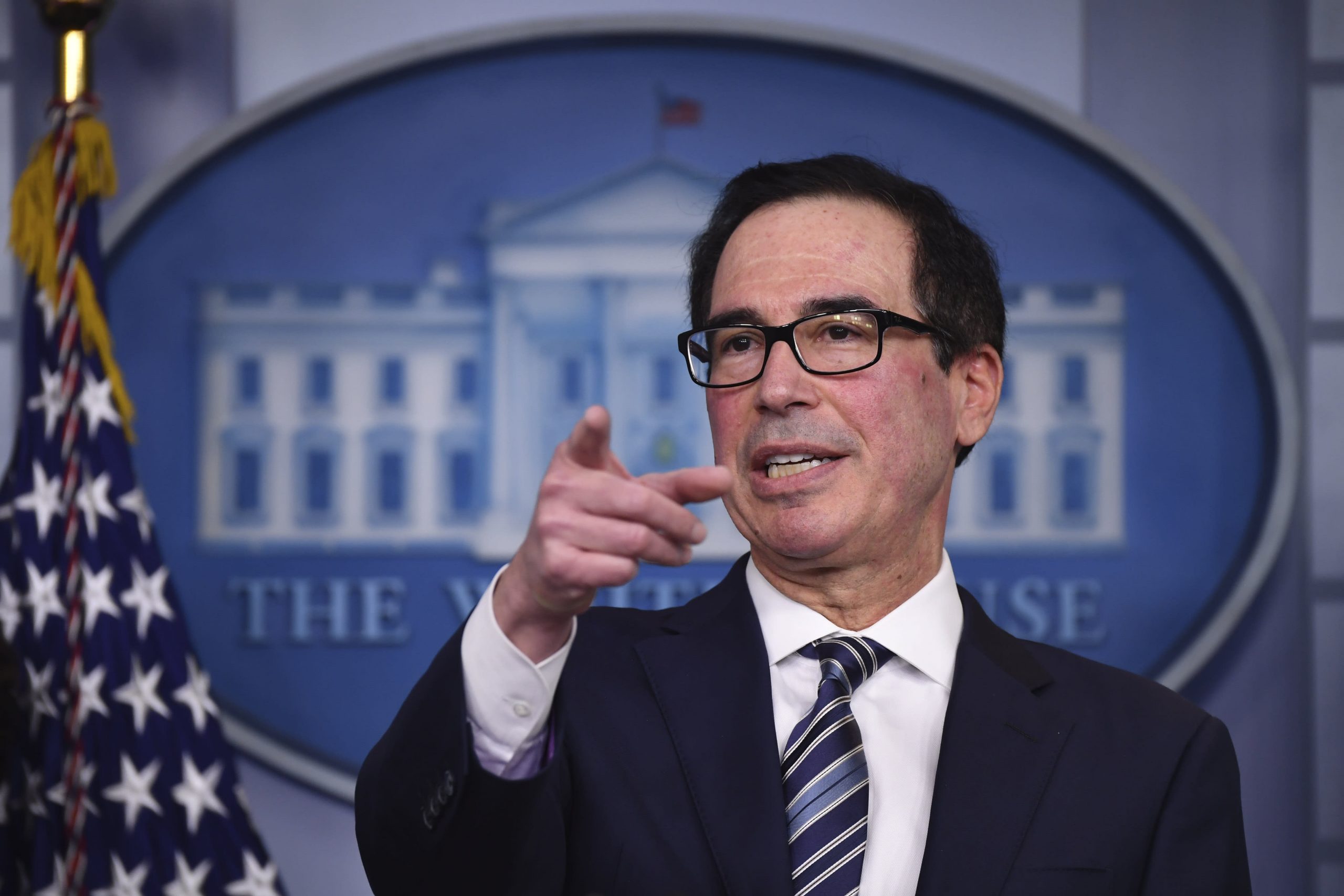
Steven Mnuchin, U.S. Treasury secretary, speaks during a Coronavirus Task Force news conference at the White House in Washington, D.C., U.S., on Thursday, April 2, 2020.
Kevin Dietsch | Bloomberg | Getty Images
Small businesses are clamoring for funds from a new forgivable loan program to combat the economic toll of the coronavirus pandemic.
But some business owners, particularly those with high rents and low labor costs, may not benefit from the program as much as they think.
The Paycheck Protection Program earmarks up to $349 billion in low-interest loans for businesses with 500 or fewer employees. Treasury Secretary Steven Mnuchin said Tuesday that he has asked congressional leaders for an additional $250 billion in funding. A Senate vote was expected as soon as Thursday.
The program, one of the core components of the $2 trillion coronavirus relief package known as the CARES Act, doles out up to $10 million to each qualifying business.
The Small Business Administration may forgive the loans, which are offered through SBA-approved banks, given certain stipulations. Any unforgiven portions would carry a 1% interest rate and come due within two years.
For example, to qualify, businesses must keep their workers and wages intact. Only funds used for payroll costs, rent, utilities and mortgage interest over an eight-week period can be forgiven.
The forgivable nature of the debt is one of the program’s key attractions. But business owners may owe more than they think if they don’t pay close attention to the fine print.
Those hoping to have their entire loan forgiven — by being turned into a grant — must use at least 75% of the funds for payroll costs.
That’s because only up to a quarter of the loan’s forgiven amount can be used for nonpayroll costs like rent, according to guidance issued by the Treasury Department last week.
In other words, the loan’s total forgivable amount can only be 25% more than the total payroll, said Brock Blake founder and CEO of Lendio, an online marketplace for small business loans.
So, if a business’ total payroll is $75,000, the maximum forgivable amount would be $100,000, he said.
(Payroll costs are capped at $100,000 per employee on an annualized basis.)
‘Forgotten gray area’
That provision could make loans from the Paycheck Protection Program less attractive to certain small business owners — especially those with high rents, few employees or low labor costs, Blake said.
Alyssa Nix, owner of Posh Boutique, a women’s clothing boutique in Sioux Falls, South Dakota, is one such business.
A PPP loan didn’t make sense for Nix because the business only employs three part-time workers, she said. Rent and loan payments are currently the business’ largest monthly expenses.
“It wasn’t going to be beneficial to my business because my payroll is so low,” said Nix.
She feels the federal government hasn’t given businesses of her size many financial relief options. Businesses with five or fewer employees are in a kind of “forgotten gray area,” she said.
Instead of a PPP loan, Nix will apply through the Economic Injury Disaster Loan program for a $10,000 advance, which doesn’t have to be repaid.
She’s still waiting to apply because the applicable website hasn’t been loading properly, Nix said.
More from Personal Finance
Small businesses worry the loan money will run out
What you need to do if you lose your job
Your lender might let you miss a few mortgage payments
Shawn Hanna, managing partner of Retail Scientifics, a data science consulting firm, said the 75% payroll threshold won’t be challenging for his business to meet but acknowledged it could be “quite” tough for other small businesses.
“The good news for our business is we’re largely payroll and have little in the way of other costs,” said Hanna, whose five-person company, based in San Diego, works primarily with retail outlets and restaurants.
Hanna submitted a form to Wells Fargo, his bank, expressing interest in applying for a PPP loan. He is waiting to hear back about next steps.
Wells Fargo capped its participation in the loan program at $10 billion and is focusing its loans to nonprofits and businesses with fewer than 50 employees.


 Signal2forex.com - Best Forex robots and signals
Signal2forex.com - Best Forex robots and signals




